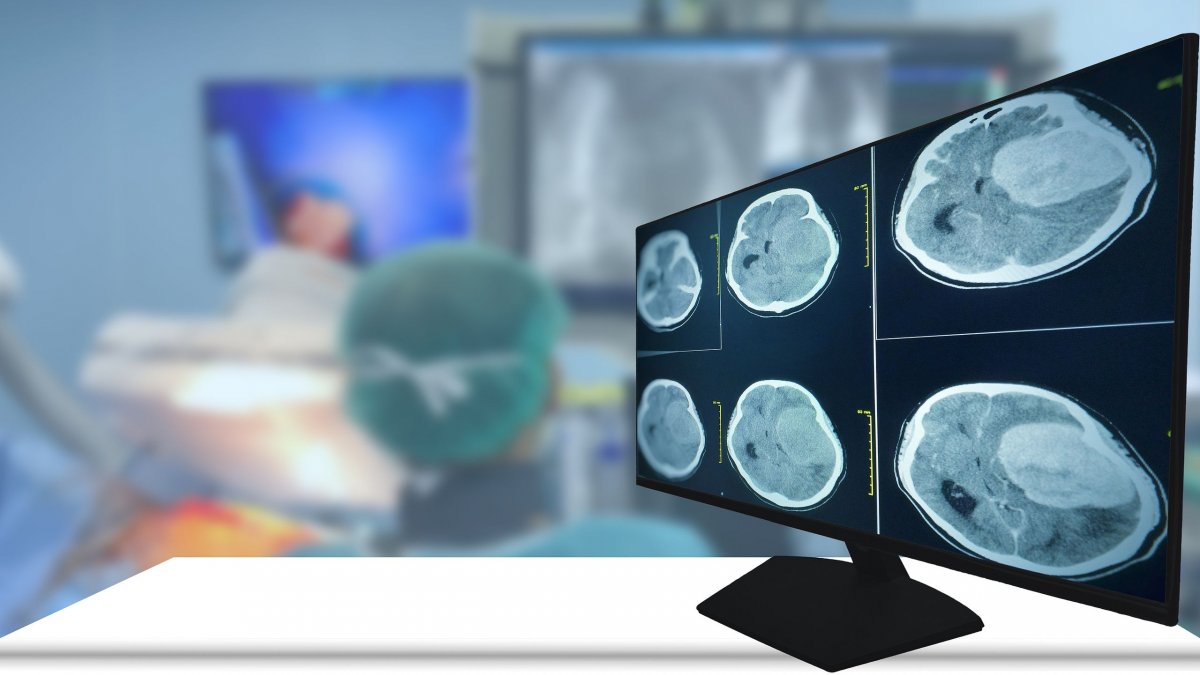Γλοιοβλάστωμα: Βρέθηκε ο λόγος που αποτυγχάνουν οι θεραπείες για τον θανατηφόρο καρκίνο
Για πρώτη φορά οι επιστήμονες έδειξαν ότι το γλοιοβλάστωμα, ένας από τους πιο επιθετικούς και θανατηφόρους καρκίνους, δεν επηρεάζει μόνο τον εγκέφαλο, αλλά επιτίθεται και στο κρανίο και στο ανοσοποιητικό σύστημα.

Ερευνητές στο Κέντρο Καρκίνου Montefiore Einstein (MECCC) και στο Κολέγιο Ιατρικής Albert Einstein έδειξαν για πρώτη φορά ότι το γλοιοβλάστωμα προκαλεί διάβρωση των οστών του κρανίου, αλλάζει τη σύσταση του μυελού των οστών και επηρεάζει την ανοσολογική απόκριση του οργανισμού.
Τα φάρμακα που σχεδιάστηκαν για να αναστέλλουν την απώλεια οστού στο κρανίο ενίσχυσαν την επιθετικότητα του καρκίνου.
«Η ανακάλυψή μας ότι αυτός ο εξαιρετικά δύσκολα θεραπεύσιμος καρκίνος αλληλεπιδρά με το ανοσοποιητικό σύστημα του οργανισμού, μπορεί να εξηγήσει γιατί οι υπάρχουσες θεραπείες –που αντιμετωπίζουν το γλοιοβλάστωμα ως τοπική νόσο– συχνά αποτυγχάνουν, και ελπίζουμε ότι θα οδηγήσει σε καλύτερες στρατηγικές θεραπείας», δήλωσε η Jinan Behnan, επίκουρη καθηγήτρια Νευροχειρουργικής και Μικροβιολογίας & Ανοσολογίας στο Ιατρικό Κολέγιο Einstein και μέλος του MECCC.
Η μέση επιβίωση για όσους διαγιγνώσκονται με γλοιοβλάστωμα είναι περίπου 15 μήνες παρά τη χειρουργική επέμβαση, τη χημειοθεραπεία και την ακτινοθεραπεία.
Ο μυελός των οστών του κρανίου
Όπως και άλλα οστά, το κρανίο περιέχει μυελό όπου σχηματίζονται ανοσοκύτταρα και άλλα αιμοποιητικά κύτταρα. Η έρευνα της Behnan ξεκίνησε μετά από μελέτες που αποκάλυψαν εξαιρετικά λεπτούς πόρους που συνδέουν το κρανίο με τον εγκέφαλο, επιτρέποντας την ανταλλαγή μορίων και κυττάρων μεταξύ του μυελού των οστών και του εγκεφάλου.
Χρησιμοποιώντας προηγμένες τεχνικές απεικόνισης σε ποντίκια με δύο διαφορετικούς τύπους γλοιοβλαστωμάτων, οι ερευνητές διαπίστωσαν ότι οι όγκοι προκαλούσαν διάβρωση των οστών του κρανίου, κυρίως στα σημεία ένωσης με τα οστά. Τέτοιες διαβρώσεις φαίνεται να είναι μοναδικές για το γλοιοβλάστωμα και άλλους κακοήθεις ενδοκρανιακούς όγκους, καθώς δεν παρατηρούνται σε εγκεφαλικά επεισόδια, άλλες βλάβες του εγκεφάλου ή σε συστηματικούς καρκίνους. Αξονικές τομογραφίες ασθενών με γλοιοβλάστωμα έδειξαν παρόμοια σημεία μείωσης του πάχους των οστών, όπως στα ποντίκια.
Η διάβρωση των οστών αύξησε τον αριθμό και τη διάμετρο των πόρων μεταξύ κρανίου και μυελού, υποδηλώνοντας ότι οι πόροι αυτοί θα μπορούσαν να μεταφέρουν σήματα από τον όγκο στον μυελό των οστών, αλλάζοντας δραματικά το ανοσοποιητικό.

Κλίση προς φλεγμονή
Οι αναλύσεις έδειξαν ότι το γλοιοβλάστωμα μετατόπισε την ισορροπία των ανοσοκυττάρων του μυελού, δημιουργώντας χώρο για προφλεγμονώδη μυελοειδή κύτταρα. Τα ουδετερόφιλα σχεδόν διπλασιάστηκαν, ενώ σχεδόν εξαφανίστηκαν διάφοροι τύποι Β-λεμφοκυττάρων που παράγουν αντισώματα.
«Οι πόροι κρανίου-εγκεφάλου επιτρέπουν την εισροή αυτών των προφλεγμονωδών κυττάρων στον όγκο, καθιστώντας το γλοιοβλάστωμα όλο και πιο επιθετικό και συχνά ανίατο», εξηγεί ο E. Richard Stanley, καθηγητής αναπτυξιακής και μοριακής βιολογίας στο Ιατρικό Κέντρο Einstein.
Οι ερευνητές διαπίστωσαν επίσης ότι ο μυελός του κρανίου και ο μυελός του μηριαίου αντιδρούν διαφορετικά στο γλοιοβλάστωμα. Στον μυελό του κρανίου ενεργοποιούνται γονίδια που αυξάνουν τα προφλεγμονώδη κύτταρα, ενώ στον μηριαίο μυελό, το γλοιοβλάστωμα καταστέλλει γονίδια απαραίτητα για την παραγωγή διαφόρων τύπων ανοσοκυττάρων.
Φάρμακα κατά της οστεοπόρωσης και επιδράσεις στον όγκο
Οι επιστήμονες χορήγησαν σε ποντίκια δύο φάρμακα εγκεκριμένα για οστεοπόρωση (ζολεδρονικό οξύ και δενοσουμάμπη) για να δουν αν θα επηρεάσουν τη διάβρωση του κρανίου και την πορεία του γλοιοβλαστώματος. Και τα δύο ανέστειλαν τη διάβρωση, αλλά το ζολεδρονικό οξύ επιτάχυνε την εξέλιξη του όγκου σε έναν τύπο γλοιοβλαστώματος και μπλόκαρε τα οφέλη της ανοσοθεραπείας anti-PD-L1, η οποία αυξάνει τα Τ-κύτταρα που καταπολεμούν τον όγκο.
Τα σημαντικά ευρήματα δημοσιεύτηκαν στο επιστημονικό περιοδικό Nature Neuroscience.








